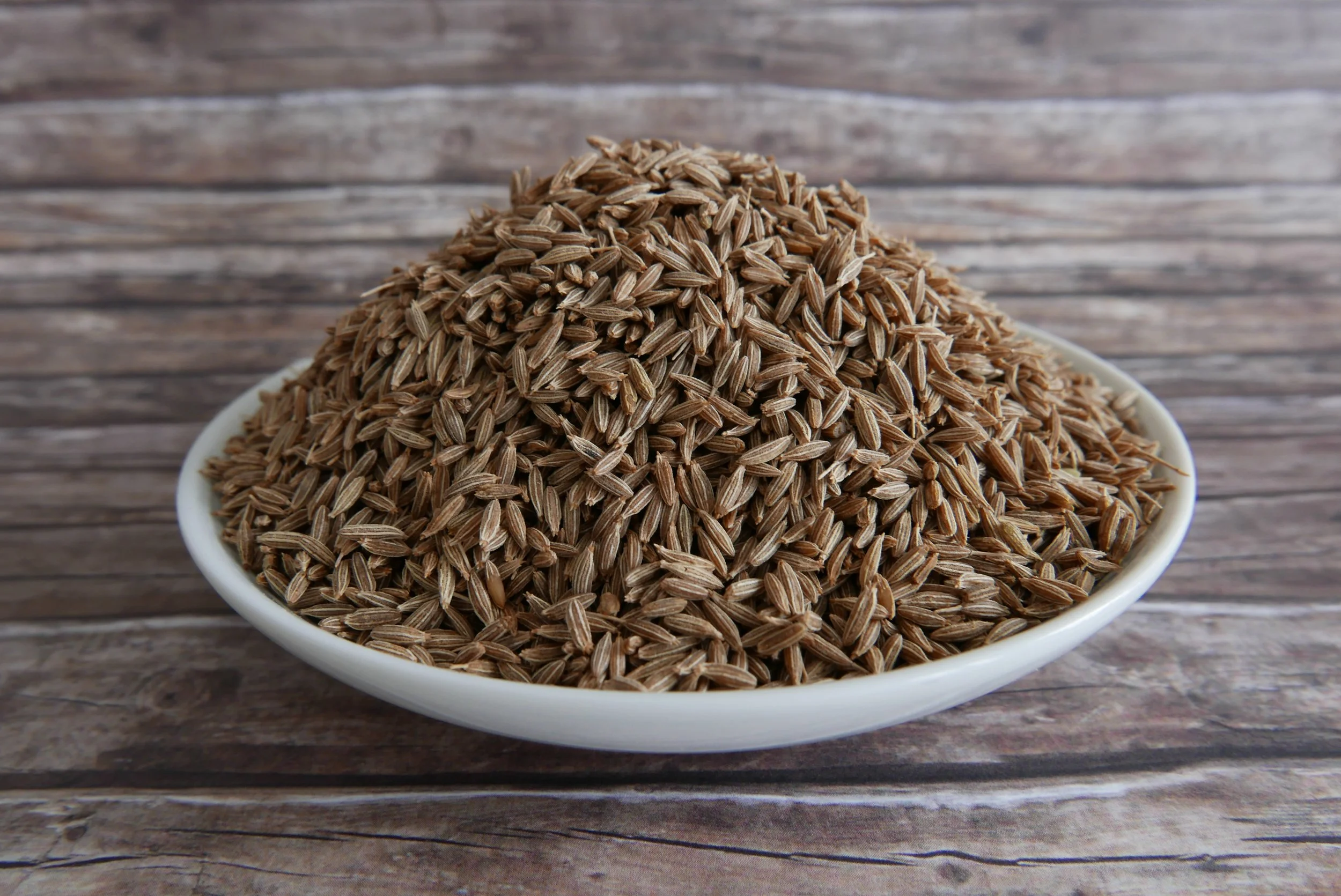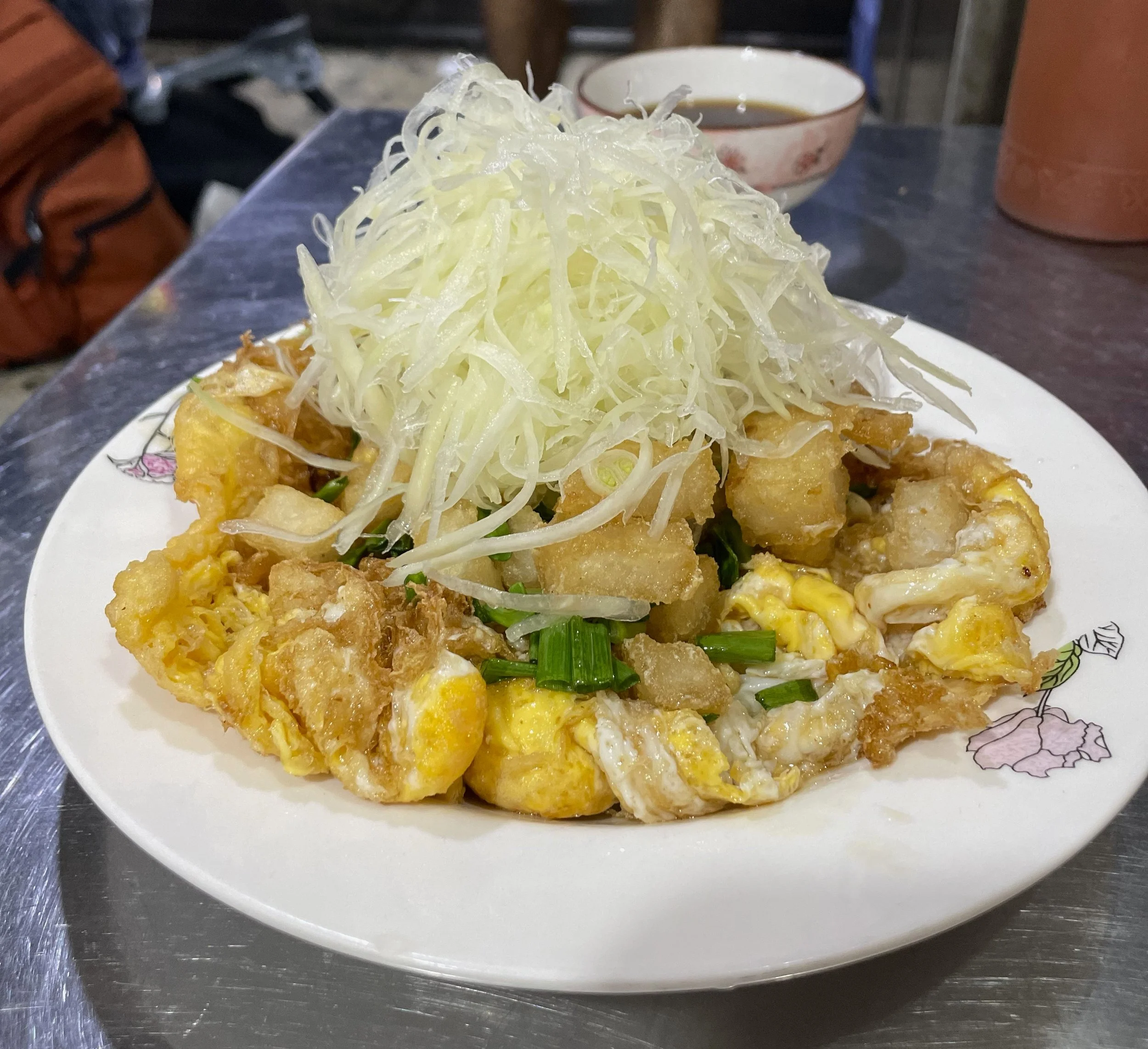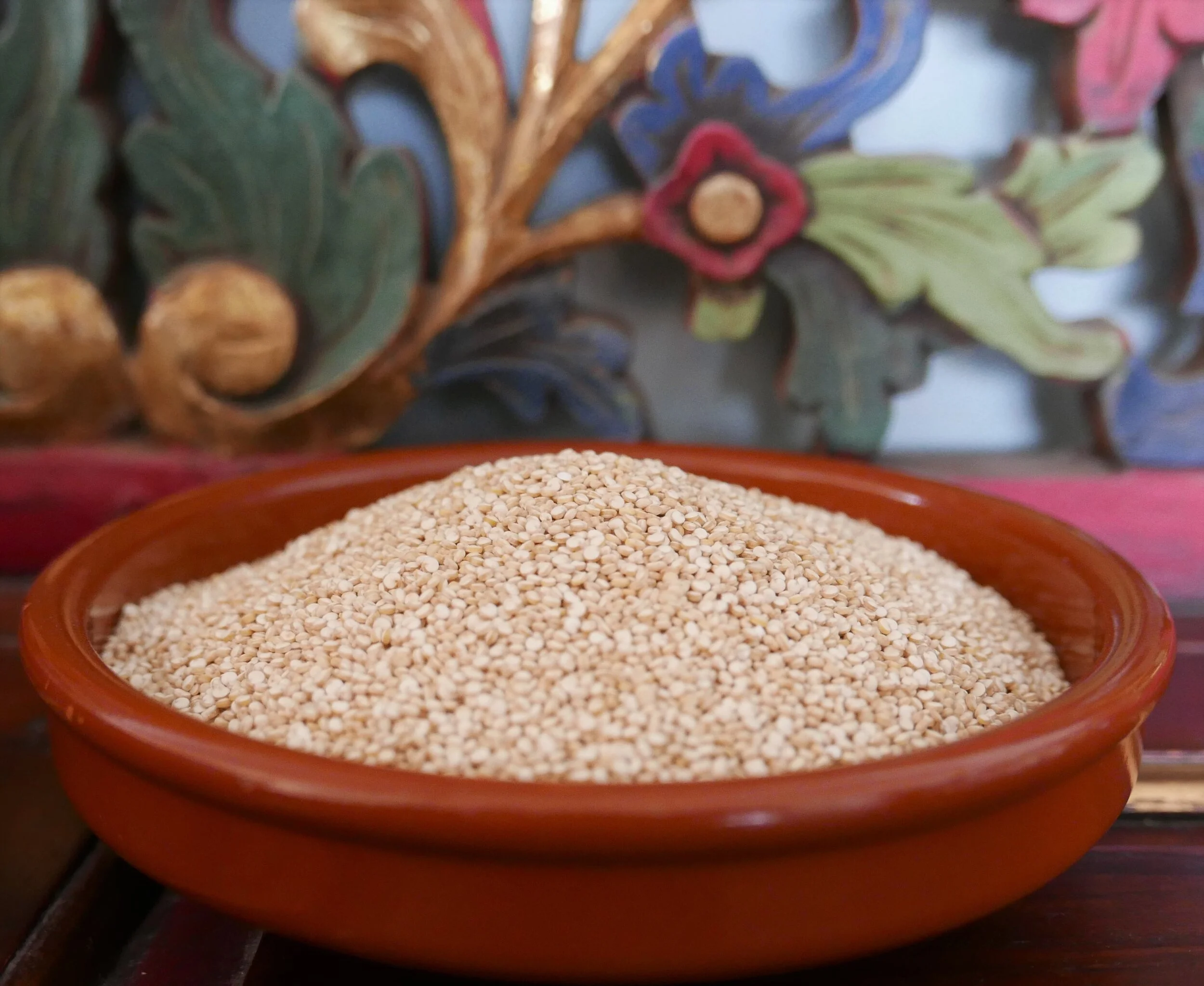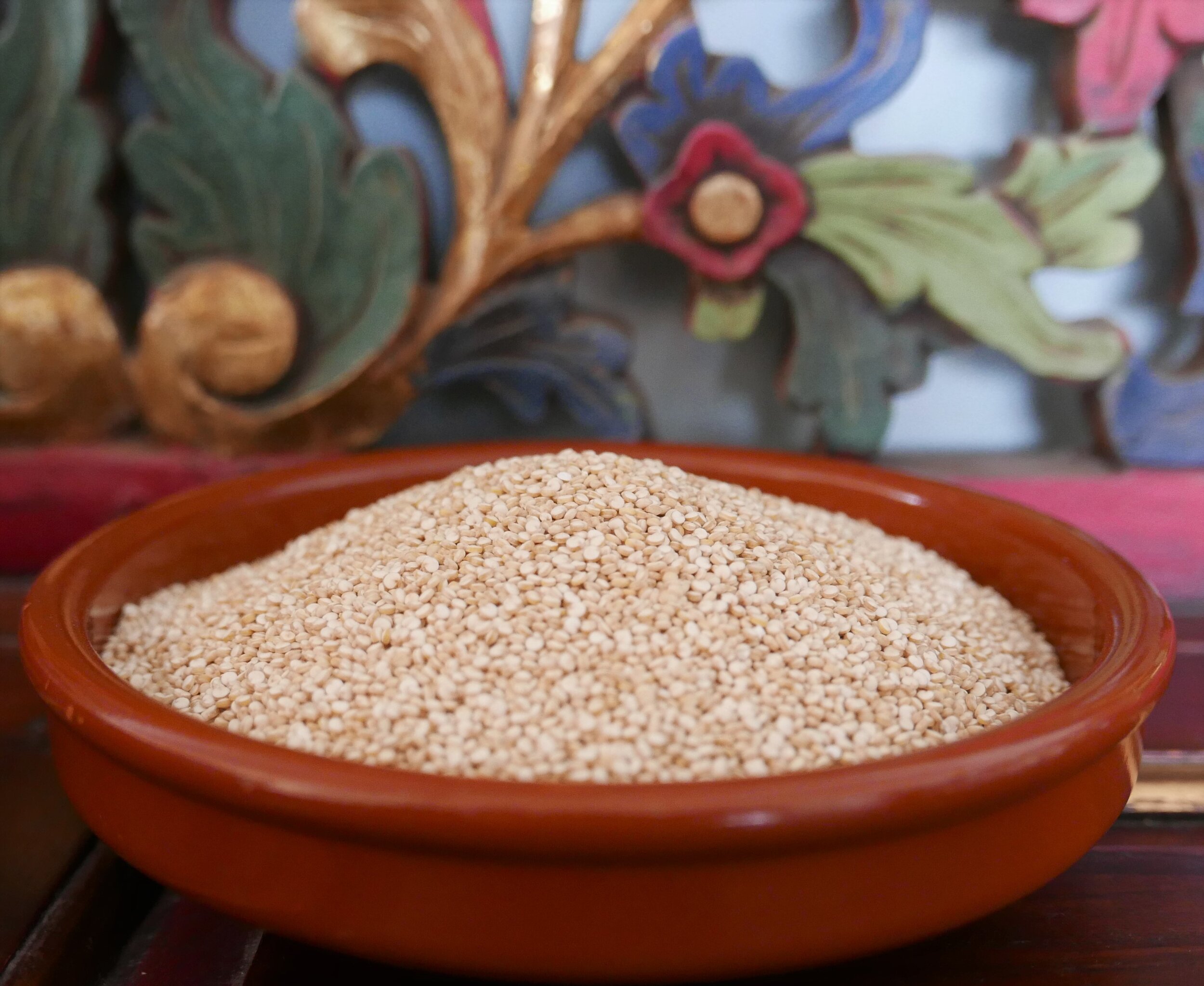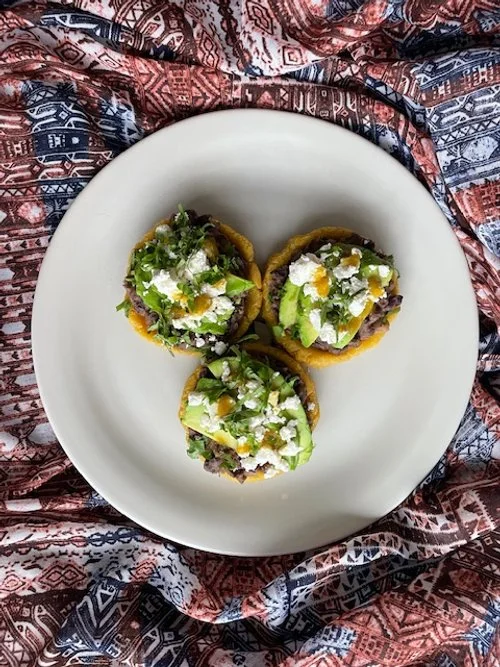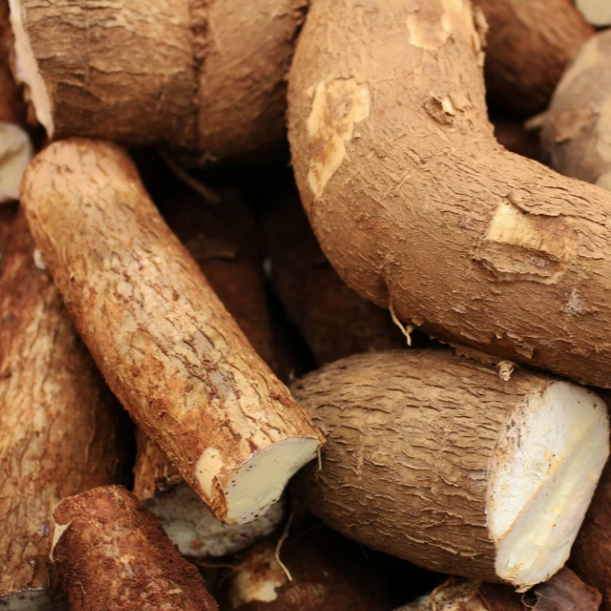explore the world through the universal language of food
A Short History of Cumin
As I was making my Sunday rounds at the markets, I spotted a beautiful bunch of baby carrots and immediately I just wanted them to roll around in a warm bath of salted butter, cumin, and a titch of honey. So that’s just what I did.
Cumin is not only my favourite spice, but also a historically important one that has been used for thousands of years. Despite some articles you may have read, cumin, the brown little wormy-looking seeds, which are readily available in markets and supermarkets, is not the same spice used in the mummification process of ancient Egypt. This type of cumin is known as Nigella Sativa or black cumin and has nothing to do with the brown cumin that is common in Latin, Indian, and Middle Eastern cuisines.
From feasts in northern Iraq around the 9th Century to Ancient Greece and the Roman Empire, cumin has been documented to be used widely as a flavouring and natural medicine to cure or ease a variety of ailments such as digestive problems. From its origins in Mesopotamia, cumin moved through Europe as a spice, a medicine, and even as a currency in Medieval England where it was used to pay rent.
The Colombian Exchange, instigated by Italian Explorer Christopher Columbus began in the late 15th Century and initiated the transference of many food products from the old world to the new and vice versa. Animals, plants, cotton, sugar, and spices were some of the products that were traded along this route, cumin was one of them that made the voyage and embedded itself into a variety of cuisines in the Americas.
Despite being known as a spice, the cumin seed is actually a fruit derived from a small flowering plant technically known as Cuminum cyminum and is from the same family of dill, parsley, and carrot (no wonder they go so well together!).
The ‘roasty’ flavour of cumin has a slightly citrus tang on the tongue combined with warmth like cinnamon and invites complimentary spices like coriander, chilli, and turmeric. It is commonly used in savoury dishes but adds a wonderful layer of flavour to sweet dishes as well.
It is a small but powerful seed that helps stimulate digestive enzymes, aids the body in absorbing minerals, and is also known as an anti-inflammatory. Hot cumin water with a dash of honey is a wonderful way to start the day. It is also an element of modern-day pharmaceuticals and is used in aromatherapy.
From Mexico to India, Greece, and Turkey, cumin is one of the most widely used spices in cuisines around the world and adds a unique profile to any dish whether it be a soup, tagine, salad, or even tea!
Cumin is predominately grown in India, providing 70% of the seed to the world, however, it is also cultivated in North Africa, Turkey, the Mediterranean, Mexico, and the Middle East.
Cumin was and still is an extremely important commodity that can be grown in arid to semi-arid terrain, which allows it to be subject to sustainable agricultural practices. It is, however, an extremely labour-intensive crop that is usually hand harvested 120 days from when the seed is planted.
As with all ingredients put down before us, we should celebrate the history and the people who made it possible for us to be exposed to such diverse ingredients wherever we are in the world. Cumin, one of the first written recorded spices in the world is a special one and I encourage you to experiment with incorporating it in a recipe or two, enabling you to understand its wonderful flavour, warmth, and diversity.
Try experimenting with these main dishes….
Achiote. Tales of the Lipstick Tree.
A cluster of small and hairy, rusty red heart-shaped fruits sit nestled amongst the branches of a 5-metre tree, waiting to pop open and reveal its vibrant flesh and seeds. The meaty part of this fruit is inedible, but the seeds have been used for centuries in many applications. This is achiote, also known as annatto, and has been used in cosmetics, as a textile dye for textiles, and as a natural additive to food for thousands of years. The beautiful colour and unique flavour of achiote has found its way into many dishes around the world.
The Origins of Achiote
Achiote stems from the Nahuatl word āchiotl and is formally known as Bixa Orellana. In the English-speaking world, it is also known as annatto, yet this is technically a name to describe the colour that is derived from the seed. Achiote finds its roots in Central and South America, with Peru, today producing the majority of the world’s supply.
Due to the complex genetic makeup of the plant, it is impossible to generate new strains, therefore there is only one type of achiote in the world, yet each can differ slightly depending on environmental circumstances.
Achiote History - from ancient civilisation to the rest of the world
Achiote was symbolically used in Mayan and Aztec ceremonies and rituals, representing blood, fertility, and the vibrancy of life. The seeds were also ground into a paste and added to a variety of dishes, creating a distinctive flavour and colour. When the seeds were soaked for a period of time, the liquid obtained a beautiful red which was then used to dye textiles. Other parts of the plant such as were also used as natural remedies to cure a variety of ailments such as inflammation or digestive disorders.
Intrigued by these wonderous plants, the Portuguese and Spanish explorers decided to take them back to Europe in hopes to trade them as an exotic commodity. As trade routes opened connecting the Americas to Asia, achiote travelled initially to the Philippines via the Manilla Galleon Trade route that began in 1565. This significant trade route which lasted for around 250 years, connected Acapulco in Mexico to Manilla in the Philippines and was one of the largest world exchanges of spices, people, porcelain and precious metals in history.
Once achiote arrived in the Philippines it was adapted into their cooking, which inspired interest from Indonesia and other neighbouring countries in Southeast Asia. Through sea trade routes, it spread to Thailand, Vietnam, and Malaysia.
As colonisation in the Caribbean took place from the 15th Century onwards, the Caribbeans started incorporating achiote as a colouring and as a paste for marinating meats. The Transatlantic Slave trade also impelled Africans to work in the Caribbean and Americas as plantation workers and servants, enabling the exchange of commodities, including achiote.
Credit: sweetlifebake.com
What does achiote taste like and how to use it?
Achiote has a subtle floral and peppery taste, providing warmth to dishes like nutmeg. Despite its mild taste, adding achiote to a dish can transform it tremendously. It is used as a popular food dye to colour cheeses, candy, ice cream, and various meat products.
It can be used as a marinade for cochinita pibil, a Yucatecan speciality in Mexico, added to Brasilian fish moqueca, infused in Puerto Rican arroz con pollo or added to a Filipino Kare Kare.
The seeds of the achiote fruit can be used as is or are treated in several ways to extract optimal colour and flavour before it is used as a culinary ingredient.
Popular preparations of achiote seeds before incorporating them into a dish are:
Achiote Oil or Water
The seeds are submerged in oil or water and heated to impart colour and a touch of flavour.
Achiote paste
Vinegar is used with ground seeds and additional herbs or spices to form a paste.
Achiotina
Is the result of a flavour and colour extraction through heated animal lard.
Non-Culinary Uses
The achiote fruit and leaves are used in a variety of cultures around the world as a diuretic, wound dressing, anti-venom, and even a cure for muscle aches and pains. In a more altered form, it is used widely to colour creams and lipsticks in the cosmetic industry and as an additive to a variety of medicines.
This wondrous little plant has managed to place itself subtly into all the corners of the world, through a history of colonisation, trade routes, and cultural exchanges over many years. Achiote is another beautiful example of how food history and culture are so interconnected and can tell exciting tales that evolve over time.
Why Are Poppy Seeds Banned?
The poppy seed is such an undervalued culinary ingredient in many countries, and disappointingly, in some regions of the world, these earthy balls of crunchiness are even banned. The history of poppy seeds and the plant they are derived from have an extremely coloured history of medical breakthroughs, war, and addiction.
Where is the poppy seed plant from?
Poppy seeds are only found in the opium poppy plant, known as Papaver Somniferum which originated in Anatolia dating back around 5000 BC.
The first known cultivation of this plant and its uses as a ‘joy plant’ was recorded in 3500 BC in cuneiform clay by Sumerians, the world’s first civilization. There is also evidence of opium poppy remnants found in ancient sites in northwestern Europe and the Alps. The opium poppy plant and its uses ranged from a food source or spice to a sedative, and pain suppressant as well as used for spiritual and religious rituals.
The Greek botanist and physician, Pedanius Dioscórides, who served in the Roman army mentions the use of the opium plant in De Materia Medica, a collection of works that cite around 600 plants and natural medicinal properties that could be derived from them.
The seeds of the opium poppy plant are usually cleaned and processed before being sold as a culinary ingredient, yet they may still contain a slight opiate residue which can show up as positive in a drug test. Poppy seeds should be available for all to enjoy as they are rich in antioxidants and minerals as well as other benefits.
Opium poppy plant
What is Opium?
Opium is derived from the seed capsules of the opium poppy plant. It was first hand harvested by splitting the pod of the plant so the milky latex would seep out and dry. This dried liquid is then used as a base to make a variety of drugs and this was quite prevalent in the 1800s when it was used as a pain killer. The latex of opium contains around 12% morphine, codeine and other alkaloids.
The ancient societies of Greece and Egypt used opium as a sedative, pain reliever, anesthesia, and also recreationally. Opium became a highly sort after commodity that was traded in the 6th-7th Century BC by Arabs along the silk road, a network of trade routes connecting Europe, Asia, India, and China.
In the 1600s, tobacco smoking in China became popular and so too, did smoking opium which started a huge addiction for many throughout the country, causing a ban on the use and sale of it in the 16th Century. Despite the ban, opium and its uses still flourished.
Throughout the Western world, opium was used medicinally as a pain reliever and a cure for those afflicted by mental illness. Opium as a prescription began around the 1600s in the United States and it wasn’t until the late 1800’s that it was recognized as an addictive drug, despite its’ known recreational uses in the 14th Century.
The Opium War
An opium den @poppies.org
By the 1700s, the British East India Company began trading with China for tea, porcelain, and silk in return for British silver. This trade wasn’t extremely profitable so with their connections with opium growers in India, they began smuggling opium into China which was sold for silver, and that silver was then used to pay for the tea.
The addiction to opium in China grew rapidly and had detrimental side effects on the country’s economy and social structure. The Chinese government intended to put an end to this trade that was affecting their country by destroying and confiscating over 1,000 tons of opium being held in Canton by British merchants. This forceful action by the Chinese government was the onset of a series of events that would lead to the Opium War of 1839 and the subsequent second war in 1856.
China’s reputation as the largest economy in the 1820s was reduced by half by the end of the two wars, with the first war leading to the British having access to five major trading ports and control over Hong Kong. The second Opium war saw Britain and France join forces to legalise the trade of Opium.
Growth and consumption of opium were banned in China in the early 1900s which led to its decline in trade in less than 20 years. The use of opium spread through the United States during the gold rush of the mid-1800s when the Chinese worked to seek money. Smoking dens of the drug heightened fears of encouraging prostitution and the increase in crimes, this in turn issued a discriminatory ban on Chinese immigrants from 1882-1892.
Early trade conventions of the 1900s led to the complete ban on opium and China’s defeat of Japan in WWII was the beginning of the People’s Republic of China and the total eradication of opium in 1949.
Opium is still used today in the medical world in the form of morphine or codeine, both derived from opiates, yet used in a heavily regulated manner in the medical world. Heroin was developed in the 1870s as a milder alternative to morphine to relieve pain and it was also used as a cough suppressant. The use of heroin grew into addiction among many in the United States.
How did we end up here?
From poppy seeds to opium poppy plants, to war to heroin……
Believe it or not, I was inspired to create a recipe after this research using poppy seeds as a paste filling for a wonderful traditional Jewish pastry known as Hamantaschen.
Quinoa - The Superfood of the Ancient and Modern world
A cluster of purple flowering, over metre-high quinoa, is truly a magnificent sight to see. The goosefoot plant is closely related to beetroot, spinach and amaranth with edible leaves but most importantly, a nutrient-enriched seed.
What is Quinoa?
Quinoa is now known today as one of the most popular ‘superfoods’ and is available around the world. This pseudo-cereal is extremely versatile eaten as a grain, ground into flour and also made into dairy-free milk. It is a gluten-free plant-based protein that contains amino acids, fibre, vitamins and magnesium.
This ancient crop has existed for over 7,000 years, finding its roots in the Andes region surrounding Lake Titicaca in Bolivia and Peru. Kinwa (in Quechuan language, used by indigenous Andean people) held strong cultural and religious significance within the Incan empire. It was a gift to the Gods and was known as “Chisaya Mama”, the mother of all grains.
When the Spanish conquistadors arrived in the Americas in the 14th Century, they burnt fields of quinoa, banishing the use of the seed for religious ceremonies.
Quinoa Fields
Credit: Cristobal Demarta via Getty Images
Fortunately, quinoa is an extremely stable and adaptable crop, surviving in harsh environmental conditions with little water needed. There are many types of quinoa that have adapted over the years to the varying geographical areas along the Andes, however, the most exported quinoa from South America is the large white seed which we see on our supermarket shelves.
Both Peru and Bolivia contribute to 80% of Quinoa’s global trade, with Peru being the largest producer of the two. Quinoa is grown in dry climates and the surge of its popularity and price after 2006 saw certain varietals starting to be cultivated around the world such as the United States, Europe, Africa and Asia.
The United Nations declared International Year of Quinoa in 2013 to raise awareness of this important ancient crop and to bring attention and support to the farmers in Bolivia and Peru. Quinoa from Bolivia is associated with the name Quinoa Real, produced by 60% of the farmers and certified organic. Peruvian quinoa is broken down into the categories of organic, biodiverse, and supporting women’s livelihoods.
The Andean grains program in South America focuses on aiding poor communities that farm quinoa, in particular women who are the majority farmers of this popular seed. Due to the fact that only certain varieties are exported, the Andean Grains Program are focusing on indigenous strains and implementing them into a local school and hospital diet programs to ensure their long term survival.
Quinoa grows in dry cool climates and begins as an extremely leafy yet slow-growing plant. Sprouting to over a metre high, the quinoa plant begins to flower and most of the leaves fall off. It is at this point the seeds are ready to be harvested.
The stalks are cut and arranged in bundles that are interwoven to withstand strong winds in a formation known as “chujilla” (huts) which are then left to dry. Harvesting in South America is mainly done by hand and when the plants are dry enough, the seeds and seed heads are rubbed gently so the two separate.
The seed is coated in a saponin which is a natural protectant from insects and birds, however, it is extremely bitter. This coating is rinsed and polished away revealing the wonderful grain which we recognize as quinoa.
Quinoa is extremely versatile in cooking due to its texture and neutral flavour. You can create wonderful salads, risottos, porridges and even desserts that are vegan, gluten-free and high in protein.
I made some quinoa fish cakes with a mango chilli dressing if you want to try the recipe HERE
JANG - THE LIFE FORCE BEHIND KOREAN CUISINE
Jang fermented sauces or pastes are the life force behind Korean cuisine and tradition, making the food from this wonderful country so unique in flavour and significant within its historical roots.
What is Jang made from?
Jang can be made from many different ingredients such as fish (eojang), meat (yukjang) and also soybeans (dujang). Dujang is probably Korea’s most popular food export found all around the world.
It is a traditional culinary ingredient that undertakes a timely process performed mainly by women. However, to explore the importance of jang, we must first understand soybeans, the building blocks on which it is created.
The Importance of Soybeans in Asian Culture
Soybeans have been cultivated for over 5,000 years and were a prevalent part of the Dongyi Tribes, that once inhabited China’s northeast and east, Korean Peninsula and Japan. Excavated evidence of carbonized soybeans leading back The Bronze Age provides an insight into the Korean diet many years ago.
Soybean farmers in Xiangfan, in central China's Hubei province.
Credit: NPR/Reuters /Landov
Soybeans have always played an important part in the Asian diet, being a primary source of protein and nutrition. The Western world used it for animal feed due to its low cost and high nutritional content before taking some time to introduce it to the human diet. In both natural and fermented forms, soybean food products today are common in many countries around the world.
There are over 2500 strains of soybeans grown worldwide, with each strain being chosen for a large variety of both fermented and non-fermented products. Soybean oil, soy milk, and tofu are the most common non-fermented soybean products found on the market today.
The process of fermenting foods has been around for 10,000 years to preserve ingredients for when the seasons changed and food was sparse, but it also can create higher nutritional content in food products through the growth of bacteria and microorganisms. When fermenting soybeans, certain chemical inhibitors are removed allowing absorption of nutrients more easily. Fermentation and the result of different varieties of dujang in Korean cuisine have proven to be both complex in flavour and have been proven in studies to help fight cancer, diabetes and to prevent obesity.
There are four main types of soy jang in Korean cuisine that vary in complexity of taste and texture. The simplest of the soy jangs is Chungkukjang. It is made by boiling soybeans and allowing them to ferment over a few days at a temperature averaging around 30°C, creating a bacteria which results in a sticky, pungent dish similar to Japanese natto.
The three other soybean jangs undergo a more complicated, timely process allowing the final products to be complex, extremely nutritious and full of umami. The base of these jangs is developed from a soy block called meju. Meju is made at different times of the year depending on the region and what the meju will be eventually used for. Doenjang and Ganjang meju is usually made at the end of Autumn, around early November yet it varies according to the lunar calendar.
Meju bricks tied with rice stalks. Credit: Jason Lang
There are three steps this type of meju will undergo before resulting in the final product.
The soybeans are soaked and boiled for around 5-6 hours before being drained, crushed and shaped into large bricks.
Traditionally these soybean ‘bricks’ are wrapped in rice stalks like a ribbon around a parcel, hung and aged naturally for 1-2 months. This process is now sometimes sped up in a controlled temperature environment cutting down the aging time to about 15 days at around 12°C-15°C. Bacteria is transferred through the rice stalks and asperlligus mould starts to grow on the meju.
The rice stalks are removed from the meju and the blocks are then placed in large earthenware pots known as Jangdok (or onggi) where they ferment for a further 1-2 months in a saltwater solution. The liquid and paste are then separated to age further to create doenjang (bean paste) and ganjang (soy sauce).
GANGJANG (Soy Sauce)
Ganjang can be divided into three categories depending on complexity, the time it takes to ferment and what dishes it is best used in. The longer the aging process, the more complexity the gangjang takes on.
Guk-ganjang is the traditional Korean soy sauce using only meju, water and salt. The flavour variances of this soy sauce will depends on the aging process and usually, this type is used for soups.
Yang-jo- gangjang is a soy sauce naturally processed with the addition of wheat, resulting in a more Japanese style soy sauce that is slightly sweeter.
Jin-ganjang is a mixed soy sauce made of a naturally produced yang-jo-jang and a chemically produced gangjang. It comes at a cheaper price, however, the flavour profile is not as complex.
DOENJANG (Soybean paste)
Doenjang is the byproduct of soy sauce production. The broken-down meju is added to an earthenware pot and allowed to ferment for a minimum of 6 months. Doenjang has a similar texture to miso, however, it is less sweet and more of a savoury base to use in soups.
Doenjang in its purist form contains only fermented soybeans and a small amount of brine. Chillies and jujubes (Chinese dates) may also be added. Koji or wheat is sometimes added to the fermentation process in more commercial varieties of doenjang, resulting in a sweeter flavour. As well as being used for its culinary purposes, Doenjang has been taken medicinally from as early as the 1600s to reduce blood pressure and ease allergies.
GOCHUJANG (soybean chilli paste)
This spicy, sweet red pepper paste is made from a combination of Korean chilli powder, glutinous rice, and ground meju, salt, kanjang and sometimes malt water. Gochu, the Korean chilli, is only grown in the Korean Peninsula and is essential in making Korea’s most popular food exports – kimchi and gochujang.
The meju in gochujang accounts for 80-90% of the final product and contains a small amount of wheat creating a slight sweetness to the sauce. The gochujang meju is fermented for around 2-3 months before it is ground into a powder. All the Gochujang ingredients are mixed together thoroughly before being placed in earthenware pots to ferment from 6 months or more.
Gochujang preparation. Credit: Michelle K Min
The rice starches allow saccharification to take place, enabling the gochujang to develop a unique sweetness with a mouthful of umami while developing some wonderfully natural bacteria, yeast, and fungus over time.
Korean dujangs display such complexities with the simplest of ingredients. All that is needed are soybeans, salt, chilli, a little bit of heat and time to create such wonderfully umami-rich products. They are creations that have been mastered over many years and are strongly embedded into Korean cuisine and culture that will, hopefully, last a lifetime.
Fried Chicken - A Revolutionary Soul Food
No matter what part of the world you are from, unless you refrain from eating meat or for religious reasons, everybody loves some sort of fried chicken.
It is quite possibly the ultimate soul food with an iconic history of struggle, racial connotations, defiance and culinary genius.
Chicken was not always a popular and accessible protein as it is today. It was once an animal that held monumental, religious and a strong fertility status in the ancient world.
Sacred Chickens
In Roman times, there were sacred chickens whose behavioural patterns – particularly their eating habits, were kept under watchful eye as they were known to have the ability to predict the outcome of events in times of war.
In Greek Mythology, chickens were considered sacred, a symbol of fertility and a token of love. The Greeks as early as the fifth century BC also used cocks to fight, a sport and tradition that is now prohibited in many countries.
Chickens, throughout history were not initially consumed but raised to lay eggs and it was only when the hen’s egg laying career was over, the old bird was then cooked but the meat was dark and tough. Chicken in the United States was not nearly as popular as it is today and has developed over the years, particularly with the introduction of vitamins and antibiotics, where chickens could start to be reared in large quantities without even seeing a lick of sunlight.
"Sacred Roman Chickens" Image Credits; Tim O'Brian/Smithsonian Mag
The History of Fried Chicken
Waiter carriers pass food to passengers on a train stopping in Gordonsville, Va. Image Credits: NPR/Town of Gordonsville
Fried chicken is a rural dish developed by the working class, cooked by the slaves, and served to their masters. For years, fried chicken was not documented in recipes but cooked and created on gut instinct depending on spices and ingredients that were available at the time. It is unclear exactly when the process of coating and then frying the chicken came about, but the method of frying meat most definitely is an influence of African culture.
Post-Civil War in the United States around the 1860s and 1870s saw slavery abolished and many African American women who had served in kitchens for years were now out of a job and income. These women began to sell their fried chicken, along with pies and biscuits, to passengers stopping at a major transport hub in Gordonsville, Virginia. Known as waiter carriers, they became iconic symbols of civil rights empowerment, becoming financially independent and spreading the joys of southern-style fried chicken throughout the United States.
As the popularity of fried chicken grew, a Caucasian man in a white suit and bead, by the name of Harland Sanders introduced pressure-cooked fried chicken in the 1930s. Thirty years later, his restaurants were to be found all over the United States and today, KFC is the most common brand of fried chicken worldwide.
Col Harland Sanders; Photo AP. The Telegraph
The idea of coating and frying chicken lays its roots in the United States, however, countries around the world have developed their own style and variations using local flavours and different cuts of chicken.
Japanese Karaage consists of boneless chicken cubes, commonly thigh that is marinated in soy, sometimes sake, dredged in potato or wheat flour and then fried. Korea’s take on fried chicken is twice-fried, initially seasoned with spices, salt, and sugar and then basted with a sweet spicy sauce before serving.
Gai Tod, Thailand’s answer to fried chicken finds its flavours with garlic, white pepper, coriander seed and fish sauce while Vietnamese Can Gha Chien uses potato flour, palm sugar and fish sauce.
Brazilian fried chicken known as Frango à Passarinho, uses a spiced lime marinade with a cornmeal and wheat flour coating. Southern fried chicken, probably the most iconic of them all, only uses chicken cuts with the bone in, is brined in salt and garlic, marinated in seasoned buttermilk and fried with a corn starch or flour batter.
Chikin, Korean-style fried chicken is usually twice fried and seasoned pre and post-frying. Influenced by the American Southern fried chicken, it also has taken a characteristic on its own where post-frying is followed by a painting of sauce on the chicken. This coating is sticky and has a combination of both sweet and spicy flavours.
From Korea to the United States, to South America and beyond, nobody can resist the simplest of pleasures biting into a piece of good fried chicken.
See my recipe here and tell me what you think!

